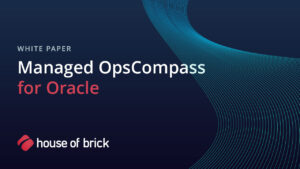What Is SQL Server TempDB?
TempDB is a system database in SQL Server that is used to store temporary data such as temporary tables, table variables, and query results. As such, it is important to implement best practices to optimize its performance and ensure the stability of the overall SQL Server environment.
Key TempDB Performance Considerations
Isolate TempDB I/O from other databases:
TempDB should be placed on its own drive separate from user databases to avoid I/O contention. Ideally, it should be placed on a fast SSD drive to ensure optimal performance.
Configure Multiple TempDB Data Files
Best practices dictate that one TempDB data file be created for each CPU core on the server, up to a maximum of 8 data files. However, you may need to adjust this number based on the workload of your SQL Server instance. We recommend sizing each data file at 1GB to start with a 512MB growth rate. As for the log file, size it to 512MB with a 256MB growth rate. All files should be uniform in size so that TempDB is utilized correctly by SQL Server.
Monitor TempDB Space Usage:
Set up monitoring for TempDB space usage and regularly review space usage and growth trends. This will help you identify any issues early and take proactive action. Also use monitoring to ensure that all the TempDB files are uniform in size.
Optimize Queries to Minimize TempDB Usage
Optimize your queries to minimize the use of TempDB. For example, avoid using large temporary tables or table variables, and use set-based operations instead of cursors whenever possible.
Avoid creating global temporary tables, which can cause contention. Consider using local temporary tables or table variables instead.
Enable Trace Flag 1118 on Legacy SQL Server Versions
Although this is becoming less relevant in modern versions of SQL, if you have an older version, this trace flag is used to allocate a uniform extent instead of mixed extents thus decreasing the amount of tempdb contention. KB328551 – Concurrency enhancements for the tempdb database – Microsoft Support
Conclusion: Staying Ahead of tempdb Contention
By following these best practices, you can optimize the performance of TempDB and ensure the stability of your SQL Server instance. For any other TempDB support questions, reach out to our team of experts at House of Brick today.
Frequently Asked Questions
TempDB is a system database in SQL Server used to store temporary tables, table variables, and query results, helping manage transient workload data.
Best practice dictates one TempDB data file per CPU core up to eight files, with uniform initial sizes (e.g., 1 GB) and consistent autogrowth settings (e.g., 512 MB).
Placing TempDB on a dedicated, fast SSD drive avoids I/O contention with user databases, ensuring stable and predictable performance.
Set up regular monitoring of TempDB file sizes and growth trends, reviewing space metrics to catch anomalies early and maintain uniform file distribution.
For SQL Server 2014 and earlier, enable Trace Flag 1118 to force uniform extent allocation, reducing mixed-extent contention in TempDB.







